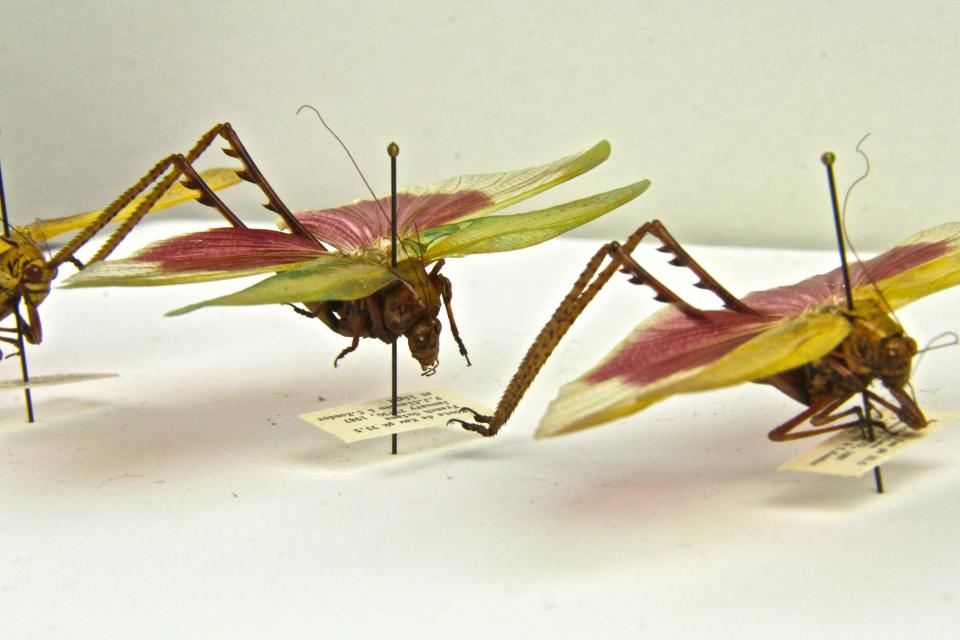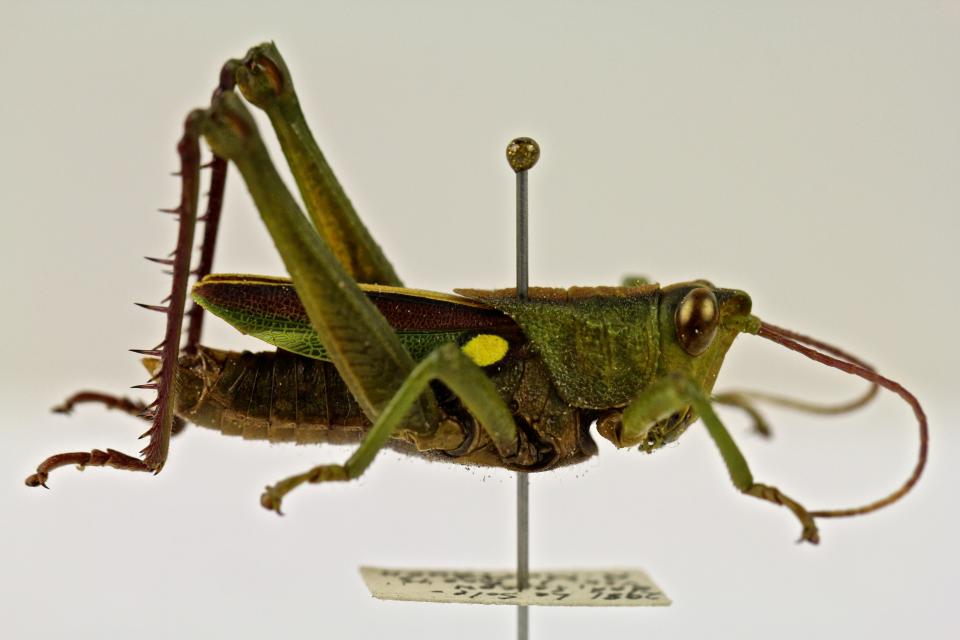Collection Visits
The University of Minnesota Insect Collection is a valuable resource for the scientific community. We welcome qualified scientists who may be interested in visiting and accessing the collection for research purposes. Please contact the curator, Dr. Robin Elizabeth Thomson, if you are interested in either a short- or long-term visit to the collection.
Specimen Donations
The University of Minnesota Insect Collection will accept insect donations from the public, based on the integrity and state of curation of the specimens. We cannot accept specimens that are severely damaged or show signs of insect pest infestation. Specimens should be properly preserved (pinned or in ethanol) and labeled with all relevant locality information. Once accepted, specimens become the property of UMSP.
UMSP adheres to the Convention on International Trade in Endangered Species (CITES) and other applicable international laws.
Specimen Loans
Loans of specimens are available to qualified scientists who wish to examine material in the UMSP collection. Loans may be arranged on request according to the conditions listed below.
Requests for loans should be made to the Curator: Dr. Robin Elizabeth Thomson.
Conditions
- All loans are for 1 year, unless otherwise stated, and are subject to annual renewal.
- Researchers are encouraged to return all material borrowed as soon as possible; all loans are subject to recall.
- Borrowed types and all unique specimens must be returned. Retention of duplicate specimens is permitted only by prior written permission of the curator.
- Individual determination labels must be placed on each pin or slide or inside each vial.
- Types designated from the University of Minnesota Insect Collection material must be deposited in that collection, unless prior arrangements are made with the curator.
- No part of this loan may be sent to another party without prior permission of the curator.
- Student loans ordinarily will be made to the sponsoring professor, who will be expected to accept full responsibility for the loan(s).
- Holotypes are sent, and should be returned, by registered mail, preferably airmail.
- Unless otherwise stated, specimens may be dissected for study. Dissected parts must be mounted or stored in a manner that best prevents loss or dissociation.
Voucher Specimens
Voucher specimens permit the scientific community to evaluate insect identifications and to assess other preservable aspects of the material on which research is based. Vouchers should be deposited according to established procedures (The Role of Voucher Specimens in Validating Faunistic and Ecological Research - Biological Survey of Canada). The University of Minnesota Insect Collection will maintain the specimens indefinitely. See the curator, Dr. Robin Elizabeth Thomson, or the director, Dr. Ralph Holzenthal, for labeling and deposition procedures. The University of Minnesota Insect Collection's preferred institutional "codon" is UMSP.
NOTE: Voucher specimens normally represent a subset of all specimens collected or observed to serve as a reference to the identity of each species and/or its life history stages. However, the UMSP will consider accepting specimens or entire collections depending on the situation and the mutual interests of the researcher(s) and the collection.
- Specimens must have been collected in accordance with local, state, national, or international regulations. Documentation of adherence to these regulations may be requested in some instances. It is the responsibility of the collector/depositor to ensure that these regulations have been met.
- Specimens must be fully prepared, mounted, and properly labeled according to the standard methods used for the taxon. The depositor must supply the materials to prepare the specimens. The curator can provide advice on methods of preparation or where to acquire supplies.
- The specimens must be minimally identified to family.
- No bulk, unsorted, unidentified material will be accepted.
- Determination labels must appear on each specimen (e.g., pinned with the specimen, placed in a vial [not affixed to the outside of the vial], glued to a slide, or placed in an envelope) or, if referring to a series of like individuals, a lead label must be unambiguously indicated.
- Green voucher specimen labels should be placed on each specimen. The label should include a reference to the project under which the research was accomplished or the publication where the voucher material is referenced. Reference to the identity, number of specimens, their life history stage(s), sex, etc. and institution where deposited should appear in the "Materials and Methods" section of a thesis or dissertation or in any subsequent publications or reports (including online resources) derived from the research.
- While multiple specimens of a species may be stored in a vial or envelope, or on a pin or slide, only a single species must be stored in such a manner. Storage units containing more than a single species will be returned to the depositor.
- For multiple specimens stored per storage unit, the number of individuals must be indicated on the determination label.
- No separate voucher collections will be maintained. All material will be incorporated within existing material.
- Determinations will not be made beyond that provided by the depositor, unless prior arrangements are made with the curator and/or the director.
- The voucher material will be made available for loan to other researchers if so requested and in accordance with established museum policy.
- No database of the material will be maintained beyond the specimen accession database already existing in the collection.
- The University of Minnesota Insect Collection reserves the right to reject voucher specimens if they do not meet these requirements.
- The collection is not equipped to store vouchers of DNA or cryogenic material.


